
Arthur Phillip was a British Royal Navy officer who served as the first governor of the Colony of New South Wales.

France began colonizing the Americas in the 16th century and continued into the following centuries as it established a colonial empire in the Western Hemisphere. France established colonies in much of eastern North America, on several Caribbean islands, and in South America. Most colonies were developed to export products such as fish, rice, sugar, and furs.

Jacques Cartier was a French-Breton maritime explorer for France. Jacques Cartier was the first European to describe and map the Gulf of Saint Lawrence and the shores of the Saint Lawrence River, which he named "The Country of Canadas" after the Iroquoian names for the two big settlements he saw at Stadacona and at Hochelaga.

Queen Anne's War (1702–1713) was the second in a series of French and Indian Wars fought in North America involving the colonial empires of Great Britain, France, and Spain; it took place during the reign of Anne, Queen of Great Britain. In the United States, it is regarded as a standalone conflict under this name. Elsewhere it is usually viewed as the American theater of the War of the Spanish Succession. It is also known as the Third Indian War. In France it was known as the Second Intercolonial War.

The Colony of Virginia was an English, later British, colonial settlement in North America between 1606 and 1776.
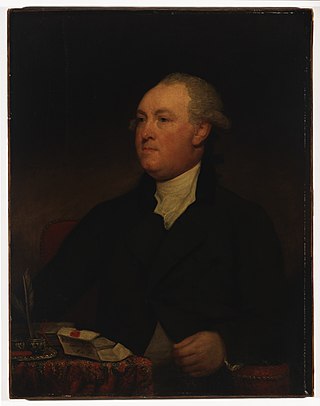
Thomas Townshend, 1st Viscount Sydney was a British politician who sat in the House of Commons from 1754 to 1783 when he was raised to the peerage as Baron Sydney. He held several important Cabinet posts in the second half of the 18th century. The cities of Sydney in Nova Scotia, Canada, and Sydney in New South Wales, Australia were named in his honour, in 1785 and 1788, respectively.
The Swan River Colony, also known as the Swan River Settlement, or just Swan River, was a British colony established in 1829 on the Swan River, in Western Australia. This initial settlement place on the Swan River was soon named Perth, and it became the capital city of Western Australia.
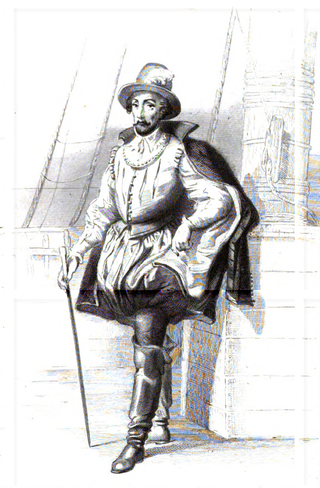
Rene Goulaine de Laudonnière was a French Huguenot explorer and the founder of the French colony of Fort Caroline in what is now Jacksonville, Florida. Admiral Gaspard de Coligny, a Huguenot, sent Jean Ribault and Laudonnière to explore potential sites in Florida suitable for settlement by the French Protestants.
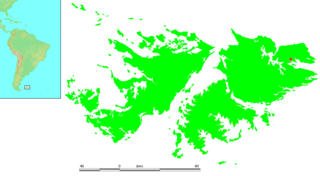
Port Louis is a settlement on northeastern East Falkland. It was established by Louis de Bougainville on 5 April 1764 as the first French settlement on the islands, but was then transferred to Spain in 1767 and renamed Puerto Soledad.
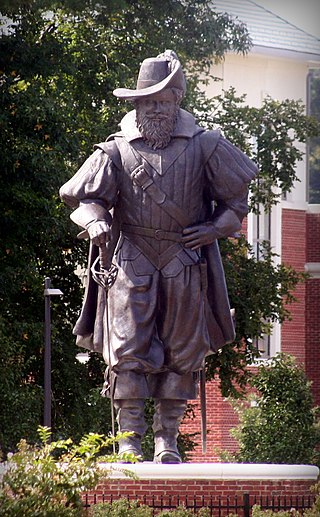
Christopher Newport (1561–1617) was an English seaman and privateer. He is best known as the captain of the Susan Constant, the largest of three ships which carried settlers for the Virginia Company in 1607 on the way to found the settlement at Jamestown in the Virginia Colony, which became the first permanent English settlement in North America. He was also in overall command of the other two ships on that initial voyage, in order of their size, the Godspeed and the Discovery.

The Company of One Hundred Associates, or Company of New France, was a French trading and colonization company chartered in 1627 to capitalize on the North American fur trade and to expand French colonies there. The company was granted a monopoly to manage the fur trade in the colonies of New France, which were at that time centered on the Saint Lawrence River valley and the Gulf of Saint Lawrence. In return, the company was supposed to settle French Catholics in New France. The Company of One Hundred Associates was dissolved by King Louis XIV, who incorporated New France into a province in 1663.
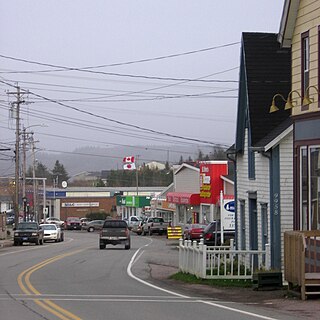
St. Peter's is a small incorporated village located on Cape Breton Island in Richmond County, Nova Scotia, Canada.
The history of Australia from 1788 to 1850 covers the early British colonial period of Australia's history. This started with the arrival in 1788 of the First Fleet of British ships at Port Jackson on the lands of the Eora, and the establishment of the penal colony of New South Wales as part of the British Empire. It further covers the European scientific exploration of the continent and the establishment of the other Australian colonies that make up the modern states of Australia.

Caldoche is the name given to inhabitants of the French overseas collectivity of New Caledonia of European ethnic origin who have settled in New Caledonia since the 19th century. The formal name to refer to this particular population is Calédoniens, short for the very formal Néo-Calédoniens, but this self-appellation technically includes all inhabitants of the New Caledonian archipelago, not just the Caldoche.

The First Four Ships refers to the four sailing vessels chartered by the Canterbury Association which left Plymouth, England, in September 1850 to transport the first English settlers to new homes in Canterbury, New Zealand. The colonists or settlers who arrived on the first four ships are known as the Canterbury Pilgrims.

The history of Nova Scotia covers a period from thousands of years ago to the present day. Prior to European colonization, the lands encompassing present-day Nova Scotia were inhabited by the Mi'kmaq people. During the first 150 years of European settlement, the region was claimed by France and a colony formed, primarily made up of Catholic Acadians and Mi'kmaq. This time period involved six wars in which the Mi'kmaq along with the French and some Acadians resisted the British invasion of the region: the French and Indian Wars, Father Rale's War and Father Le Loutre's War. During Father Le Loutre's War, the capital was moved from Annapolis Royal, Nova Scotia, to the newly established Halifax, Nova Scotia (1749). The warfare ended with the Burying the Hatchet ceremony (1761). After the colonial wars, New England Planters and Foreign Protestants immigrated to Nova Scotia. After the American Revolution, Loyalists immigrated to the colony. During the nineteenth century, Nova Scotia became self-governing in 1848 and joined the Canadian Confederation in 1867.
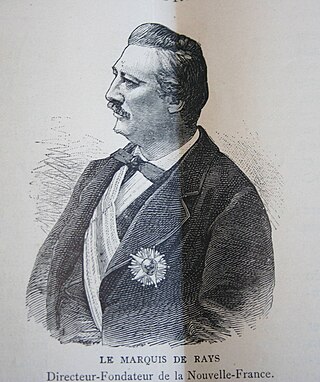
Charles Marie Bonaventure du Breil, Marquis de Rays was a French nobleman who had ambitions of starting a great French colony in the South Pacific. He led four European expeditions to establish colonies in a place he called New France which is the island now referred to as New Ireland in the Bismarck Archipelago of present-day Papua New Guinea.
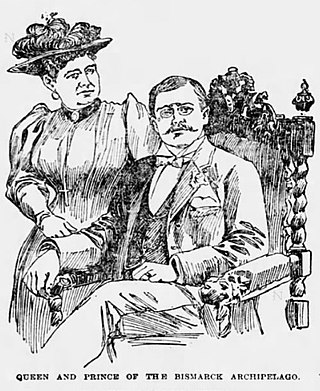
Emma Eliza Coe was a noteworthy businesswoman and plantation owner of mixed American/Samoan descent, also known as Emma Forsayth, Emma Farrell, and Emma Kolbe.

Mauritius was an official settlement of the Dutch East India Company on the island of Mauritius between 1638 and 1710, and used as a refreshing station for passing ships. It was already frequented by Dutch ships from 1598 onwards, but only settled in 1638, to prevent the French and the British from settling on the island.

The history of New Italy, New South Wales dates back to 1882. The historic nature of the New Italy settlement in the Richmond Valley Council in New South Wales, Australia, has been recognised with the listing of much of the settlement on the New South Wales State Heritage Register on 9 August 2002.




















